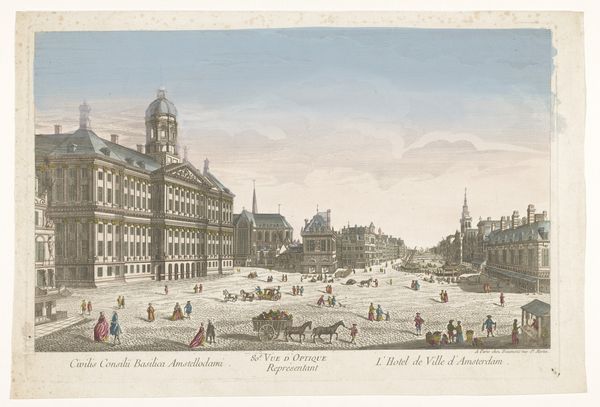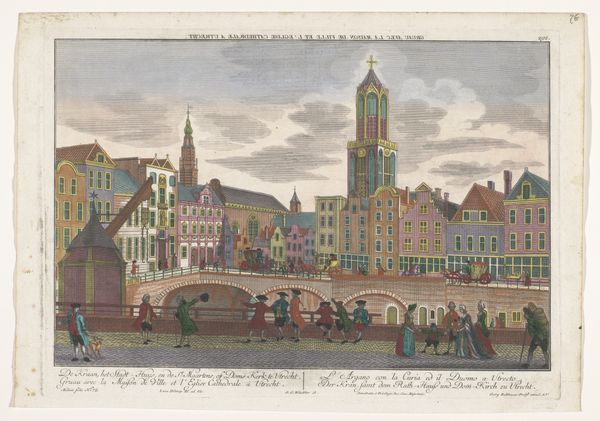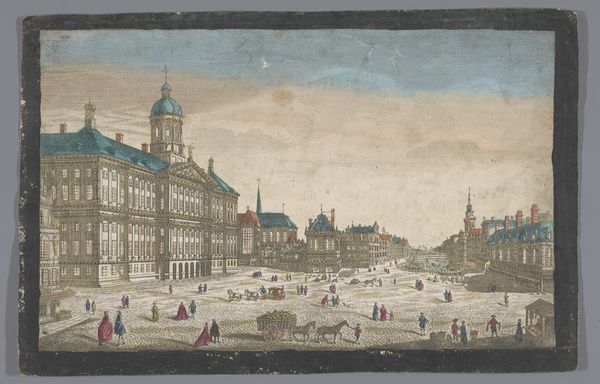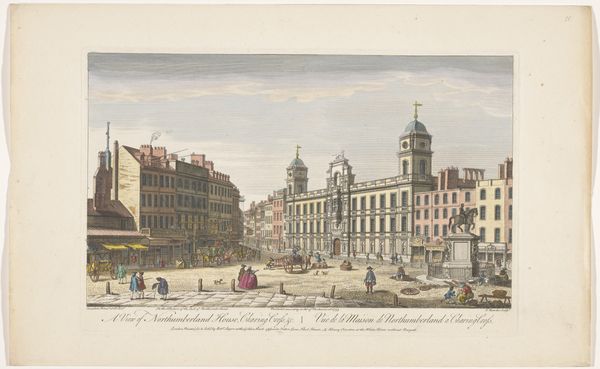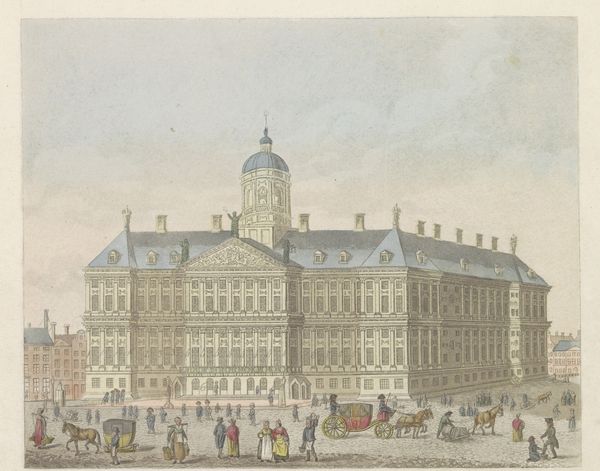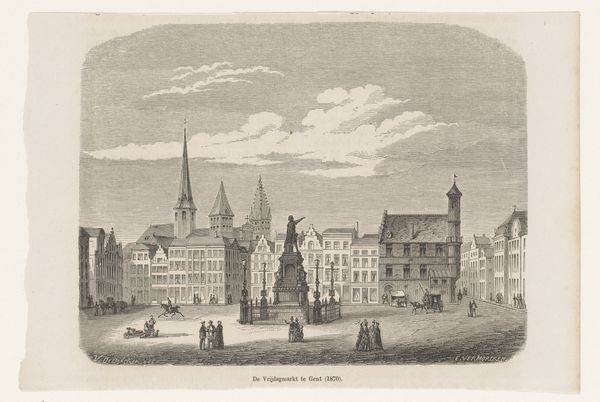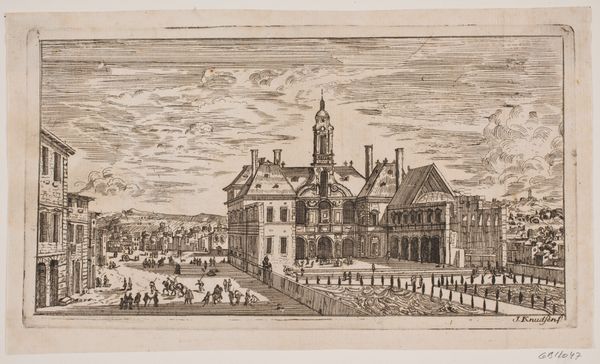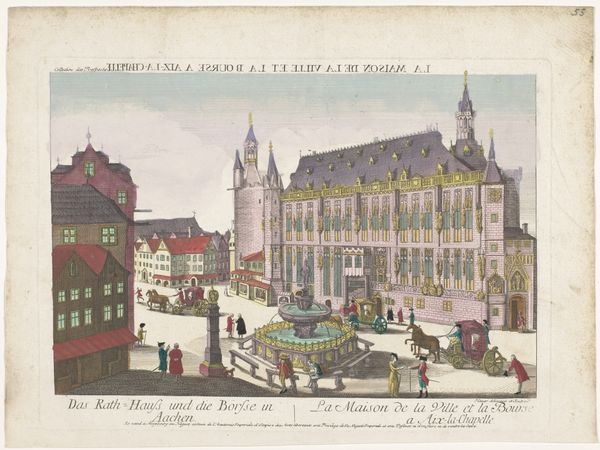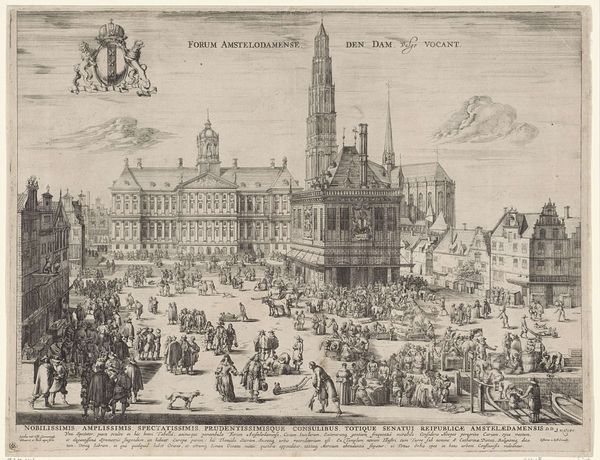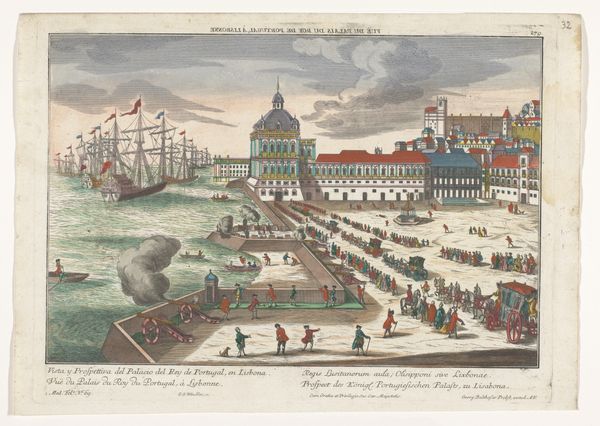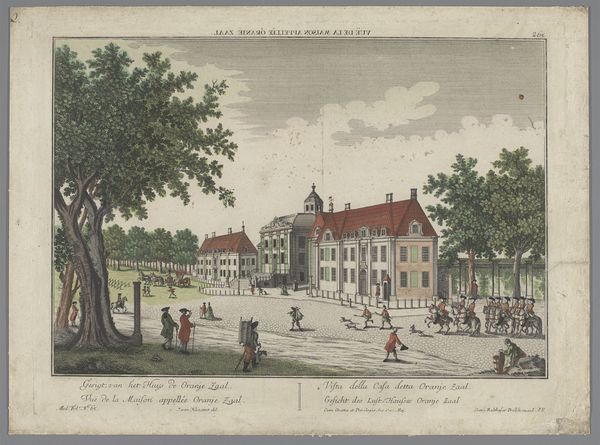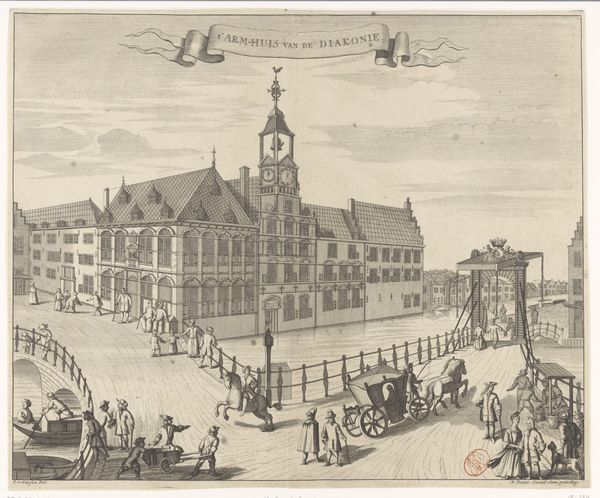
Dimensions: height 321 mm, width 437 mm
Copyright: Rijks Museum: Open Domain
Georg Balthasar Probst made this print of the Amsterdam Town Hall using etching and engraving techniques, then adding color. Consider the processes involved in creating this image. Etching and engraving are intaglio methods, where lines are incised into a metal plate, inked, and then printed onto paper. This print is one of many, revealing a crucial aspect of printmaking: reproduction. The image could be widely distributed, serving both decorative and documentary purposes. The hand-applied color adds another layer of labor. Each print would have been carefully colored, likely by workshop assistants, emphasizing the division of labor typical of the era. This was a product of burgeoning capitalism, where images like this were commodities, traded and consumed as representations of civic pride and commercial power. Paying attention to these materials and processes helps us to understand the print not just as an artwork, but also as a cultural artifact embedded in the social and economic landscape of its time.
Comments
No comments
Be the first to comment and join the conversation on the ultimate creative platform.
